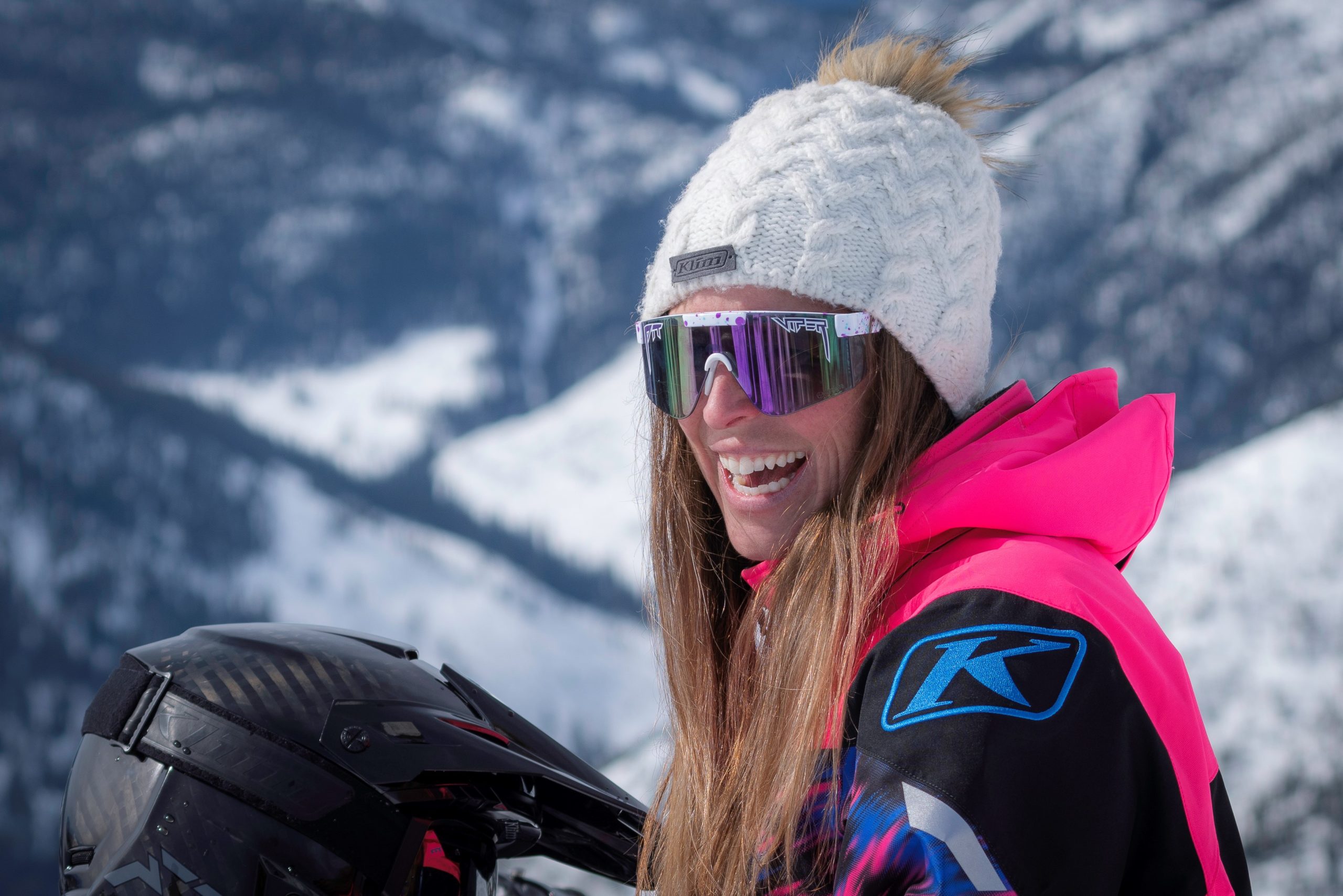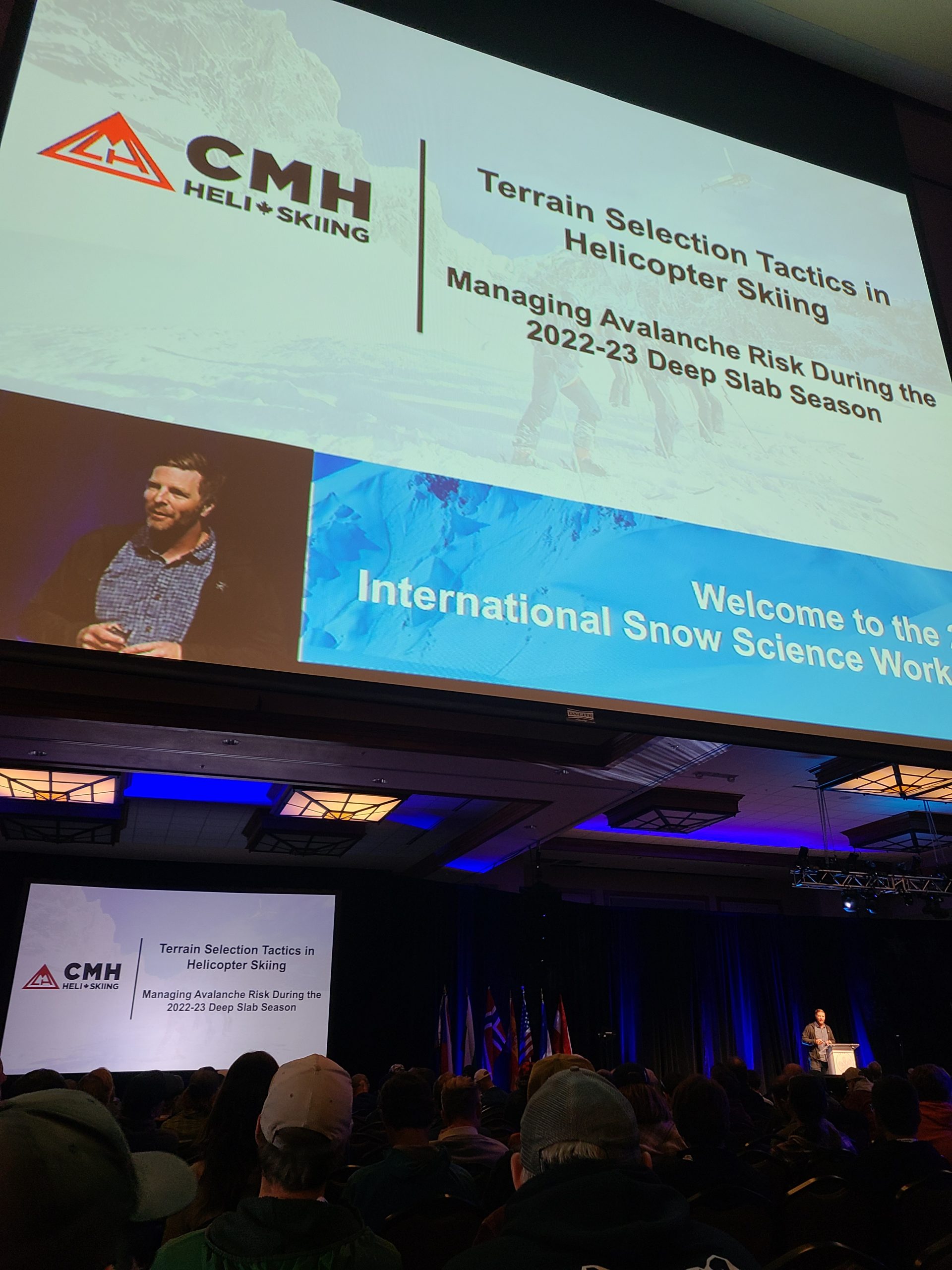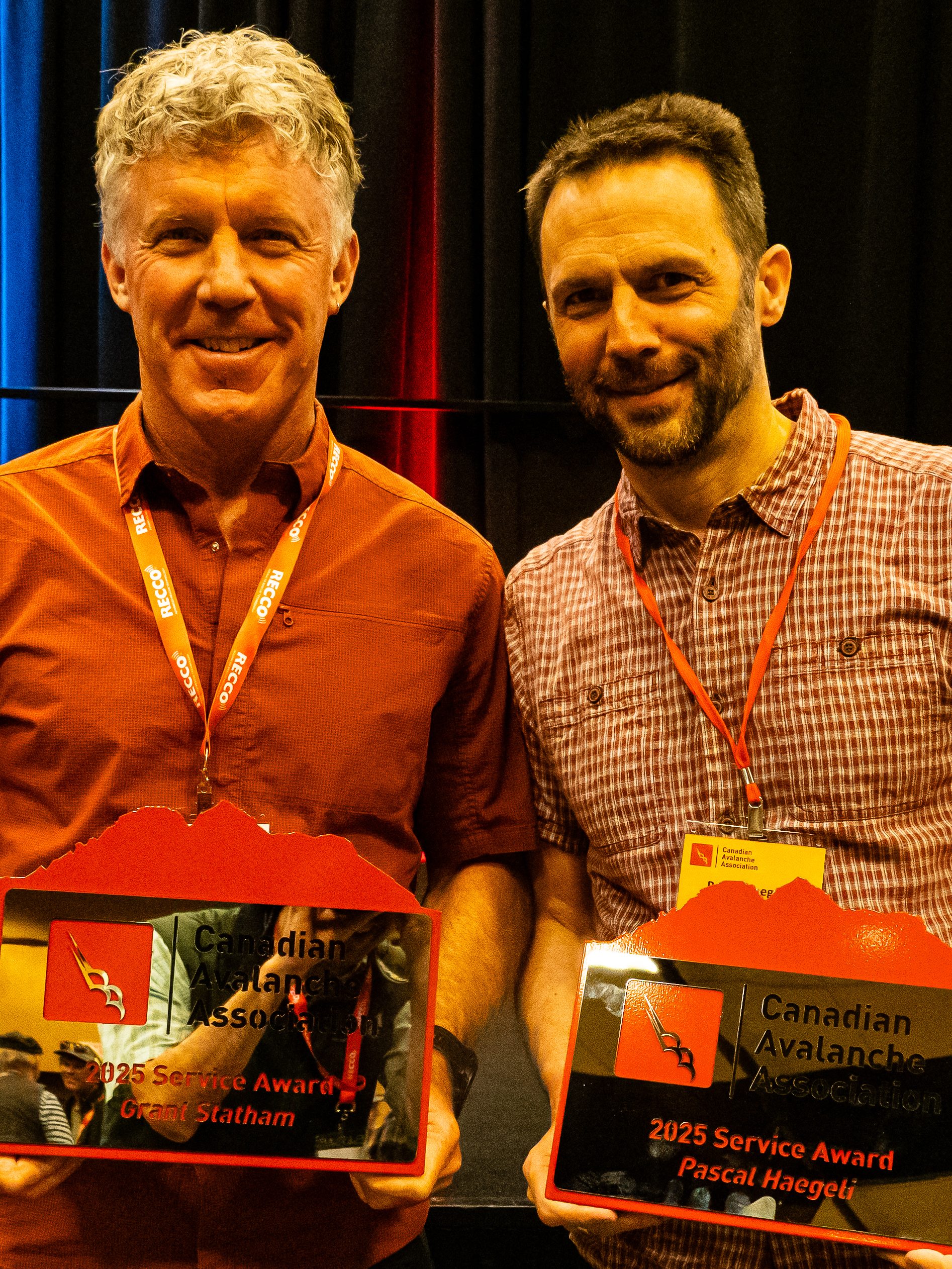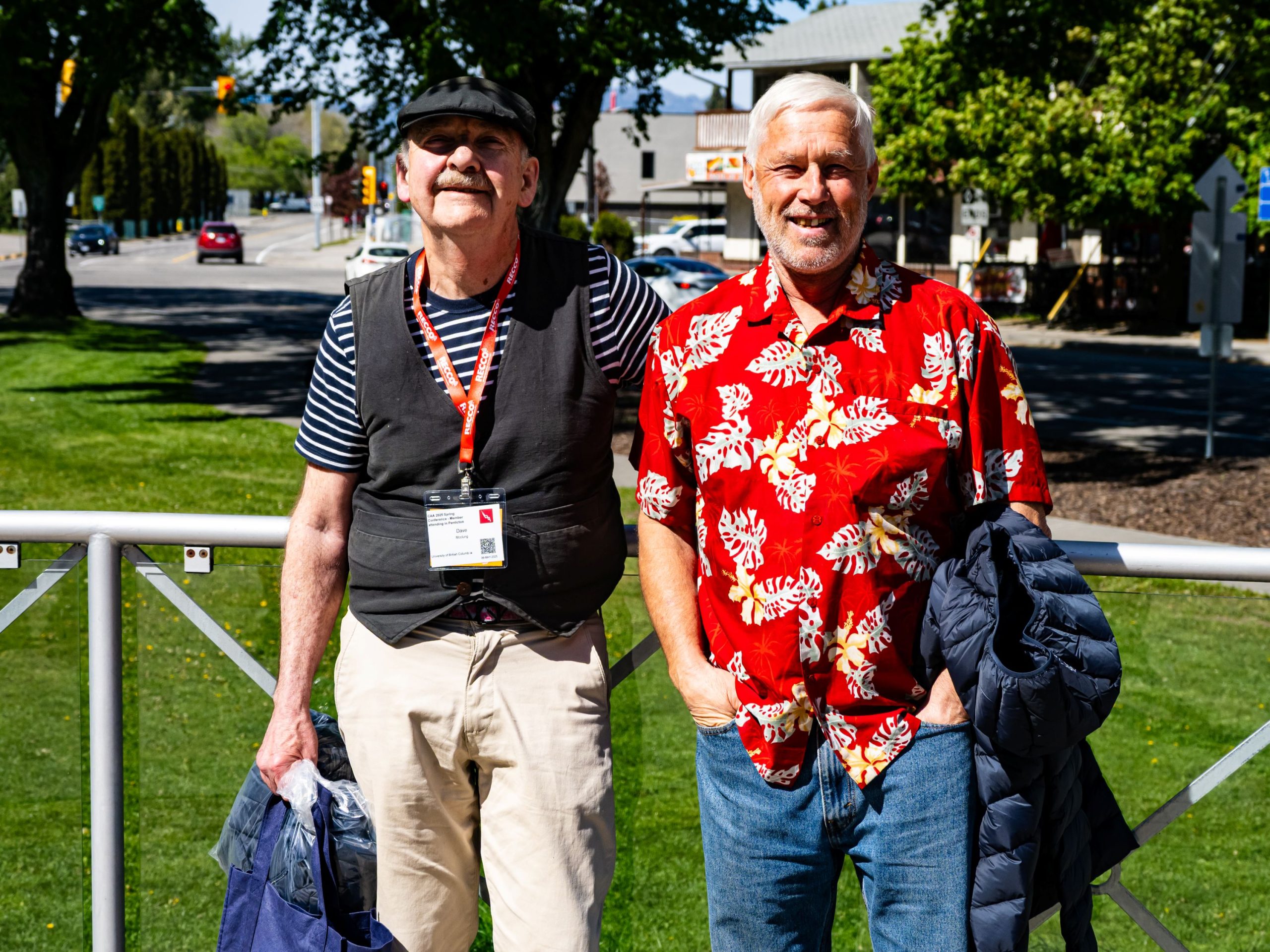By Alex Cooper
Note: This interview initially appeared in The Avalanche Journal, Volume 133, Fall 2023.
Julie-Ann Chapman is a snowmobile guide, instructor, and CAA Avalanche Practitioner, based in the West Kootenays. As the owner of She Shreds Mountain Adventures, she offers snowmobile clinics, avalanche safety courses, and occupational training around B.C. I spoke to her about how she managed working in so many different areas while dealing with last winter’s challenging snowpack.
Check out the video for the complete interview, or read the abbreviated transcript below.
Alex Cooper: To start, can you give a quick overview of how you normally manage the avalanche safety aspect of your camps?
Julie-Ann: My camps are pretty unique, seeing as I’m mostly based in the West Kootenays close to Nelson, but I also offer clinics elsewhere over all over B.C., basically Revelstoke, Golden, Valemount, over on the coast, Pemberton, all these areas. It’s a little bit different as far as your general operation, where you’re in one place all the time and you get very comfortable with that snowpack throughout the season.
When I’m based in Nelson, where I am most of the time, we do our morning meetings with the guides under our umbrella, and we keep a close tab on the snowpack. We don’t change any sort of ways we operate, we operate as per standard.
When I go to other operations, this is where it becomes a little bit different. Obviously, I’m studying the snowpack at home, but I’m also studying the snowpack throughout all these areas that I’m going throughout the whole season. Then I hire a local outfit, not only for legal purposes for land use, but I also do this for safety, knowing the snowpack, and getting the intel from the local guides in that area. That’s the big difference between the home-based operation and when I travel to other locations, to get that safety aspect ticked off.
What methods do you use to monitor the snowpack in other areas?
InfoEx definitely is the number one source. And then just talking with the guides from the Canadian Motorized Backcountry Guides Association in all the different parts of B.C. to get the local intel. Avalanche Canada obviously is great—avalanche.ca as well as the MIN reports.
How widespread and how prominent did you notice the deep persistent layer in the areas where you were running your camps?
The beginning of the season, it was obviously a little bit more reactive than as the season progressed, but it was always there. It didn’t come off the radar at all last season. As far as how prominent it was, it was more prominent in in the West Kootenays than in any of the other areas. Well, Revelstoke was pretty prominent as well. But Valemount, it was more prominent in the early-season and didn’t really have anything happening later in the season. Golden, was more reactive mid-season as they had quite the shallow snowpack early-season. It was there, and more reactive at different times of the season throughout B.C. It didn’t react too much in the later season. I’d say it was prominent throughout all the areas for sure.
How did it change your approach to running your camps and guiding this winter?
Comparing it to other years, with surface hoar layers or these deep persistent weak layers, they’ll be on the radar and then they kind of get erased if they’re not reactive. This deep persistent weak layer was on the board all season, although it was unreactive and widespread throughout the whole season, it was still there on everyone’s radar. The low-probability/high-consequence was lingering in the back of my mind the whole season.
How it differs from other years was it made my spidey senses a little bit more touchy as far as the approach to guiding. It kept my plans very conservative. I was more aware of other people or other groups. I was more scared of overhead hazard with others around me. If other people came into the area I was teaching and guiding in, I would leave right away because I didn’t want to risk anything with overhead hazard or other groups, not knowing what their education is with avalanche safety and that kind of stuff. I didn’t take any risks and wanted to get my group out of the way for safety purposes.
Group management was a little bit more tight this year. In the snowmobile guide world, we call it “play pens.” We’ll get into an area and tell our clients, “OK, you’re not allowed past this ridge, you’re not allowed past this tree line.” Give them a little boundary where they’re allowed to play in a safe area. I was very, very strict about that. People that didn’t listen, I would take their keys away and kind of punish them because it was not a year to risk that kind of stuff.
Very luckily, with She Shreds, the product I offer is an educational guided experience. They’re coming for a clinic, they’re coming for an avalanche course, they’re coming for occupational training. It’s not just guiding. The mindset my clients come for their product is a learning, an educational mindset. They’re open to listening and that kind of stuff. For me, it was a little easier than maybe most guiding outfits out there because of the clientele that come to me and their mindset that they come in. As far as group management goes, it was a little easier than some other operations that I’ve spoken to. That was another different kind of thing for this year. I was a little bit more strict with group management and that kind of stuff.

An anecdote I heard from somebody at the Spring Conference was they found there were times they were seeing evidence that things are good, things are stable, and that it was challenging to remain conservative even if the signs were saying that things might be OK. Did you find that as well? Was maintaining that diligence challenging?
It was a fine line of not getting stuck in that entrenchment mode of, “OK, the snow is getting better, I know this terrain, I think I can let my clients out,” but at the same time keeping that safety aspect of this deep persistent weak layer being reactive. It was definitely tough to judge when it was safe to let clients out. And because it was such a touchy year and unpredictable snowpack, I didn’t really mess around with letting my clients loose and taking risks.
It was just one of those things. I was like, “You know what? This is not the year to just wing it or say, ‘Oh, this is getting more safe.’” It wasn’t the year for me to let loose, basically.
OK. Was there ever a point where you said, “OK, now it’s time to step out, change my mindset?
There was, at the end of the season, before the spring diurnal cycle kicked in, that I was a little bit more willing to step out. I needed to take each day on its own, and I needed to do more tests in the snowpack before I would let clients out. I wouldn’t only just read InfoEx and look at avalanche.ca and be like, “Oh, it’s getting safer.” I wanted to do my own tests because it was such a widespread issue that I needed my own database in that area that day before I let my clients out.
This year, I hired more guides to be able to hang out with the clients or do tests while I’m hanging out. Whereas other years, I’d get the information and I’d do my regular tests per week. This year, it was way more everyday tests.
Did you find it stressful guiding this year?
At the beginning of the season, it was more stressful because the last time we had this kind of issue was in 2003. Back in 2003, I wasn’t guiding—I started guiding in 2010—so this was my first experience with a snowpack with a deep persistent weak layer. It was stressful at the
beginning of the season because I was figuring out how to get my ducks in a row, to be confident with the snowpack, and that kind of stuff. But then again, my clients, they come with a mindset of education and learning, and they’re there to listen. My clients were so awesome with understanding the snowpack and being very OK with listening to me and bringing them in safe places. There are big mountain areas I have permits to operate in, but I didn’t even go there this year because, whether it’s access, being exposed too much, or just too “big mountain stuff.” I had return clients being like, “Can we go back to this area?” And I was like, “I’m sorry, this year’s not the year for that zone.” We had to keep it more safe and conservative.
It was stressful at the beginning of season when I was getting a handle on the snowpack. When I accepted the fact this year’s not the year to test and push boundaries, it almost was like a blanket of comfort and the stress kind of went away after that. I did get a little bit stressed when the spring diurnal cycle started to kick in at the end of the season because I wasn’t too sure if that sleeping dragon was going to wake up and see some big action. I stepped it back a little bit more in the spring.
Then the season ended really quickly because it got hot. In a regular year, I’ll go all the way into the end of May. This year, I think my last booking was the last week of April or the first week of May, when it started to get really hot. I didn’t have to stress out too much at the end of the season because it just got hot quick and operations ended.
How were your clients with acknowledging the dangerous snowpack and the uncertainty you had to manage?
In the avalanche courses, it made it for a really fun year to be able to track this layer and see the reactions on it. As far as far as the clients go, as I mentioned earlier, they all came with a mindset of education and learning, so when I teach them not only how to ride and start to teach them a little bit about the snowpack, they get really interested. I’m very lucky with the product that I offer with She Shreds, the clients that come, they are totally cool with learning and listening and that kind of stuff. I got very lucky with client expectations this year. Nobody was really upset. They all understood. You tell them, “My main goal is to get you home at the end of the day to get back to your family.” As soon as
you tell them that, they understand it’s safety first with the backcountry operations.
Is there anything else you’d like to say?
Hopefully next year our snowpack is a little bit more stable and more mellow. At the same time, as professionals, it’s always good to get a little complex snowpack once in a while because it keeps us on our toes and it keeps us very in-tune with analyzing the snowpack and making decisions based on that. I appreciated the snowpack last year because it kept me on my toes and kept me furthering my education. But year after-year of that kind of snowpack, I don’t know if I want to take on the stress.
But yeah, I’ll take it once in a while.






